Bird pairs for Valentines Day
Love Is in the Air: Bird pairs for Valentines Day
Text and photos by Heather Cline
In honor of Valentine's Day, I thought I'd share 10 photos and quick facts on bird pairs.
#1 Killdeer
This is a courting pair of killdeers, which is a type of plover. Killdeer pair up for mating season through a courtship ritual called a scrape ceremony where the pair bows to each other, then fan their tails to reveal their orange-brown rumps. They follow this with an aerial display and series of calls. Their nest will be nothing more than a shallow depression that both participate in creating. Despite the simplicity of their nests, they can be very difficult to spot.
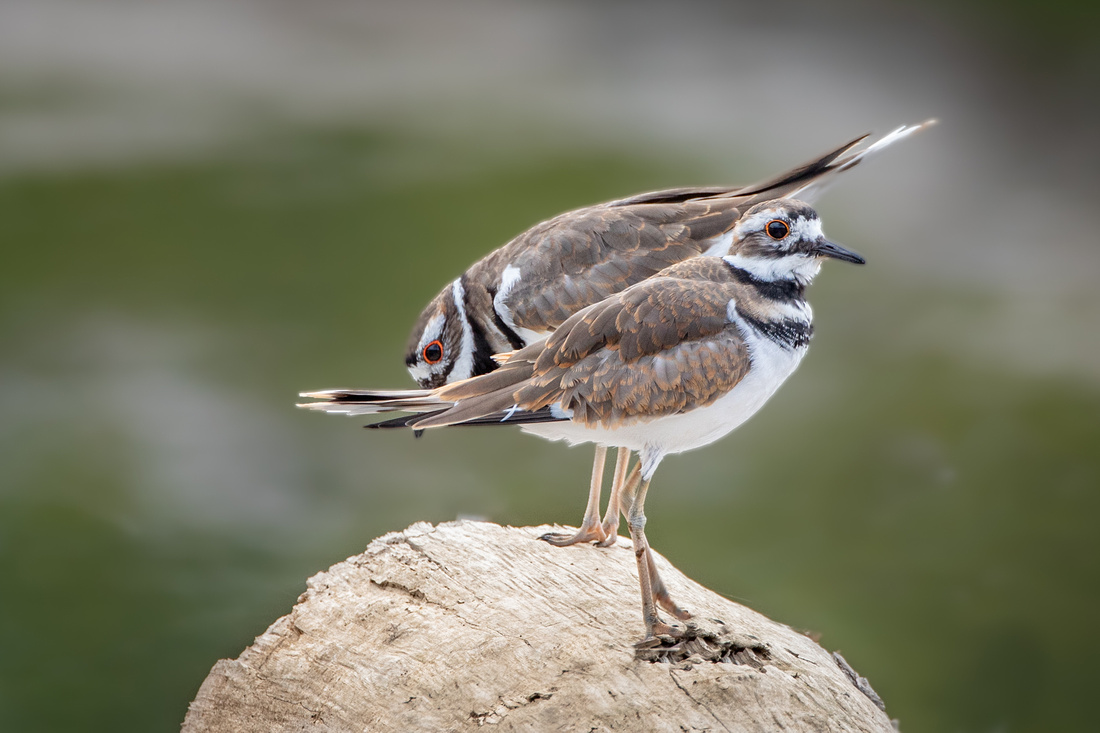 
|
#2 Bald Eagle
Bald eagles pair up for mating season through courtship displays, nest building, and vocalizations. They are generally monogamous and mate for life. They are one of the largest raptors and their nests are the largest of any bird too. This pair is from an area near my home that has been together for at least 8 years.
 
|
#3 Tree Swallows
Tree Swallows take part in something called the courtship pounce where the female reacts to the male's vertical posture. The female approaches perched male and displaces him, perching in his former spot. The male may then perch at hole and chatter. These perched pairs face each other, bobbing heads up and down, sometimes making contact with their bills.
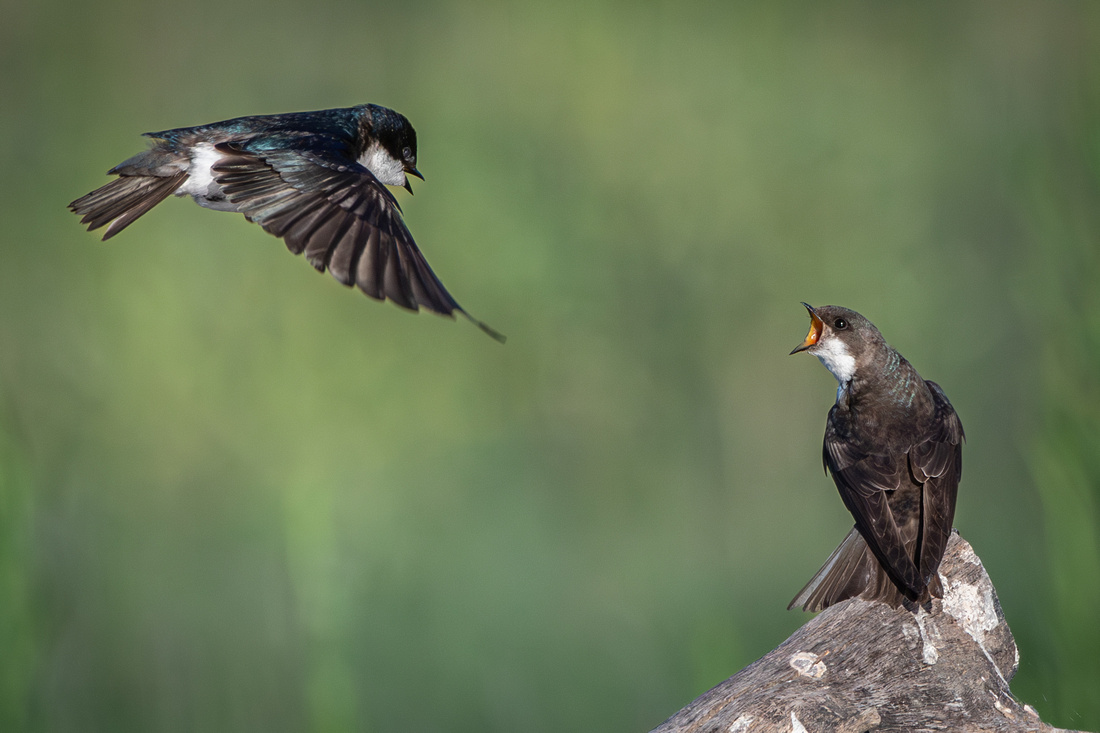 
|
#4 Mallard Ducks
Mallards are generally monogamous with courtship including head and tail shaking, head-bobbing, dipping, and whistling. This is one of many bird species where the male has more bright and colorful feathers than their female counterparts. This is known as sexual selection and is used to attract a mate. They tend to lay their eggs near water and this pair was exploring tall grasses near the river in early spring.
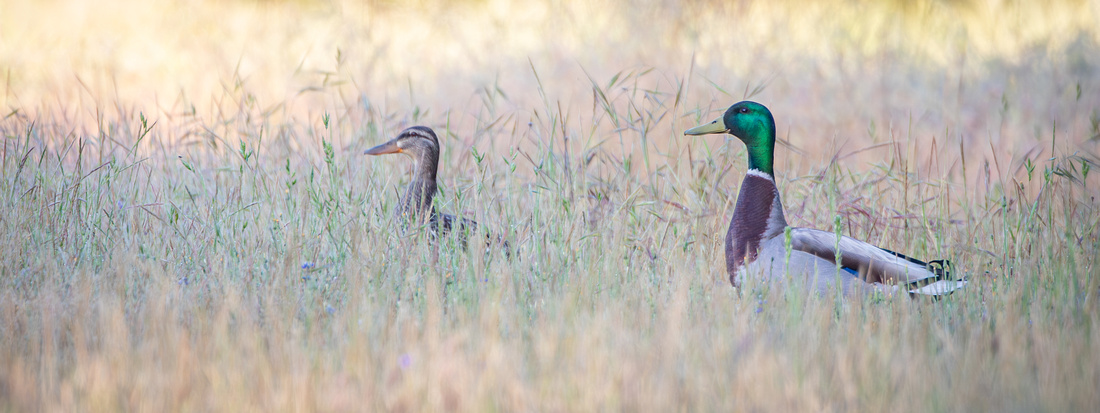 
|
#5 Western Grebes
Western grebes put on an amazing courtship display. The have an elaborate courtship display called "rushing." Both male and females "run" across the surface of the water side-by-side, with their necks curved and wings extended, then simultaneously diving together. This display often includes other behaviors like "weed ceremonies", like the one below, where they present aquatic vegetation to each other before mating occurs.
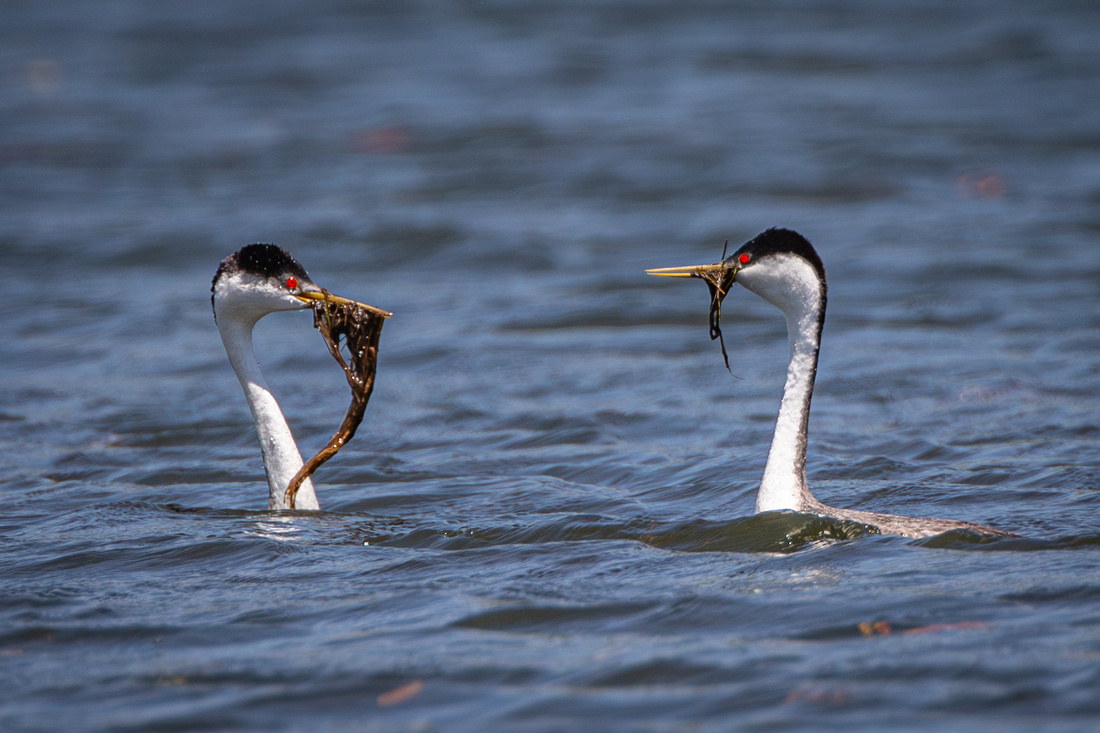 
|
#6 Red-Shouldered Hawks
Red-shouldered hawks begin pairing up to mate at 1-2 years of age. Their courtship begins with aerial displays like sky-dancing and circling. They are monogamous and territorial birds that tend to return to the same nest year after. This pair, that I referred to as Beatrice and Bertrand built a new nest in an area near my home last year which means they were either a first-time mating pair, one or both lost their mate from previous year(s), or their previous nest was destroyed, and they had to start new. They hatched 4 eggs and were excellent parents!
 
|
#7 California Quail
Quails are highly social birds that live in small flocks known as coveys and pair bonds generally form between birds from the same covey. These coveys break up in the spring and males begin defending their territory while looking for a mate. If both birds survive into the next year, they tend to be monogamous.
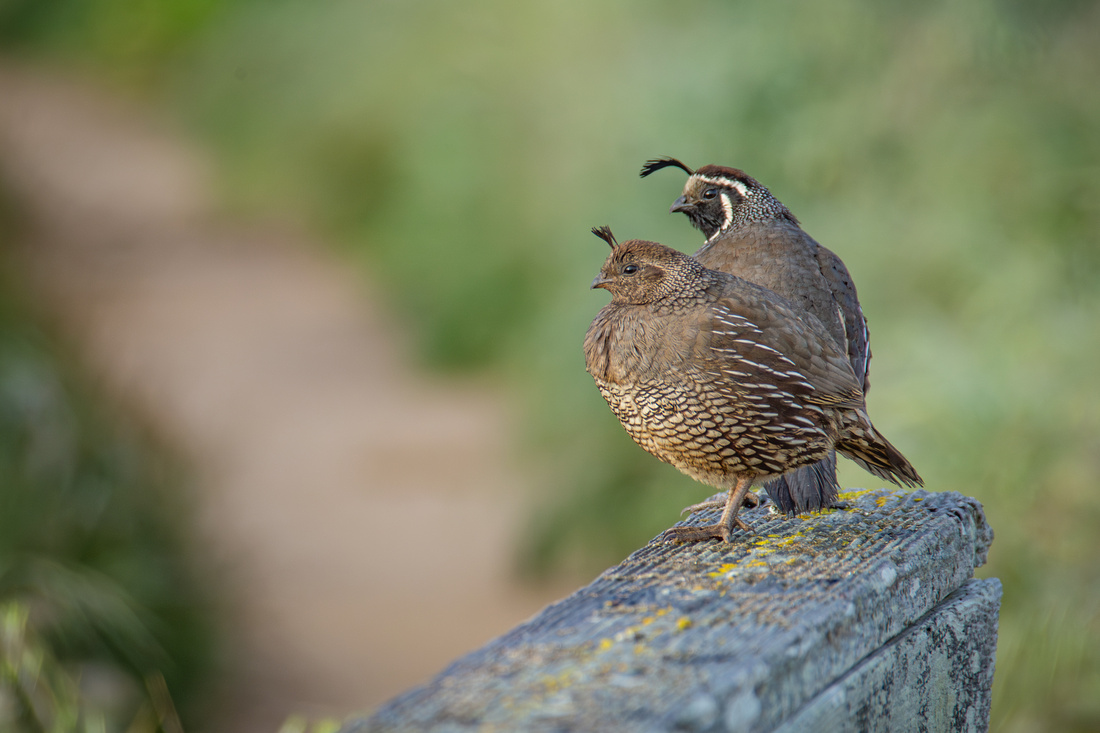 
|
#8 Sandhill Crane
Sandhill Cranes pair up for mating season by performing a courtship dance that includes wing stretching, head bobbing, bowing, and leaping to attract a mate, and then maintaining their bond with a complex series of calls and dances. Sandhill cranes can start breeding as early as two-years old but some don't start until they reach the age of seven. They tend to build their nests in almost the exact same location as the previous year.
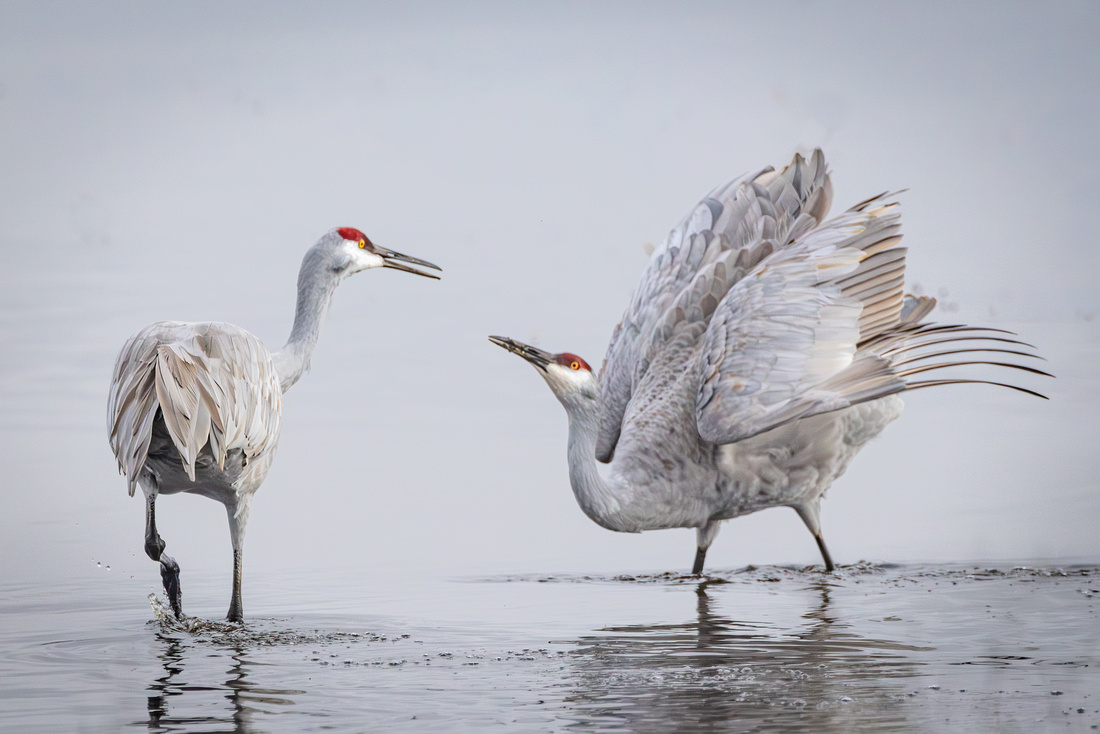 
|
#9 Wood Ducks
Male wood ducks, considered to be one of the most colorful waterfowl in North America, attract females through courtship displays to show off their colorful plumage. After the pair breeds, they build a nest in the cavity of a tree. They are one of the few species to perch and nest in trees, using sharp nails on their webbed feet to balance and get into and out of tree cavities.
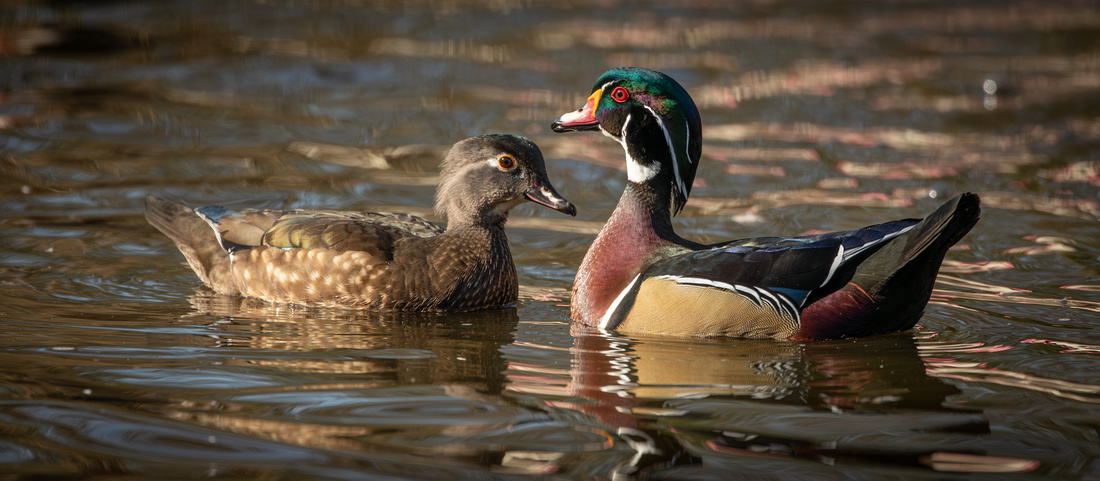 
|
#10 Brandt's Cormorant
Brandt's cormorants live in marine coastlines and estuaries along the Pacific Coast of North America. They pair up for mating season by the male selecting a nest site and performing courtship displays to attract a female, which usually involves inflating their bright blue throat pouch, spreading their wings, and pointing their beak upwards. Females choose a mate based on these displays, and once paired, they build a nest together, with the male primarily gathering nesting materials and the female constructing the nest itself.
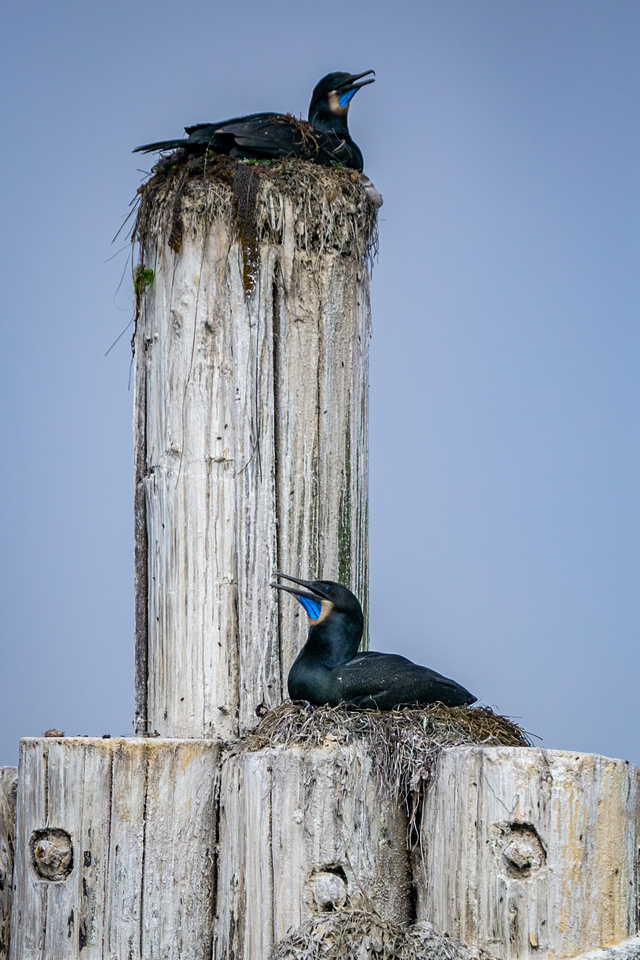 
|
I hope you enjoyed these bird pairs and have a wonderful Valentine's Day!